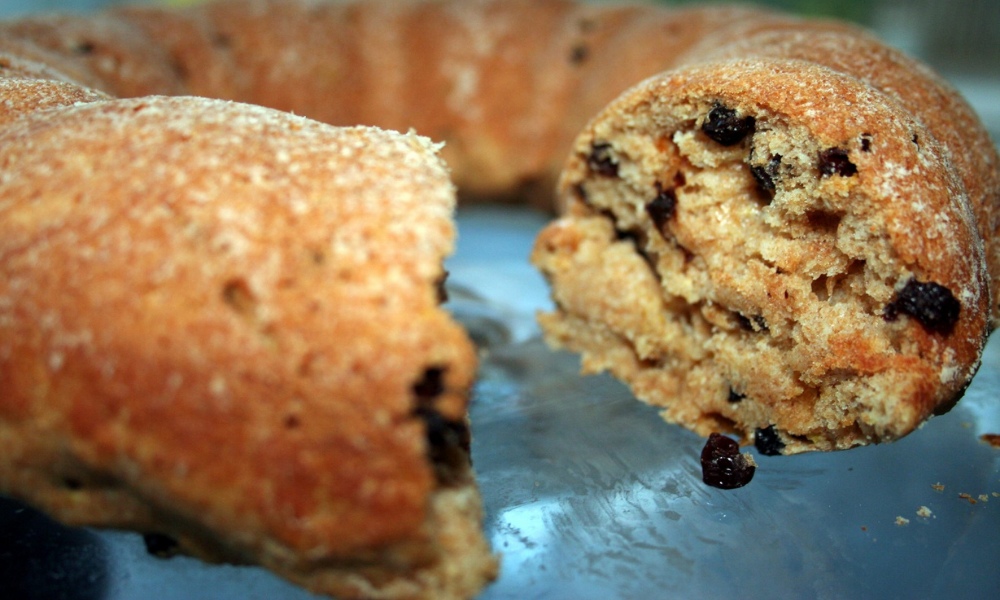
Stevia
Happy Sweet-Tooth Friday! It’s Christine here with your healthy dessert recipe of the week. With all the sugary Halloween candy going around, I thought it would be nice to explore an alternative sweetener like stevia!
Is stevia safe?
After a not-so-great first experience with stevia and pumpkin, I vowed to do some more research on stevia to get it right! I didn’t just find out about cooking with stevia, I also learned about the crazy controversies surrounding the sweetener.
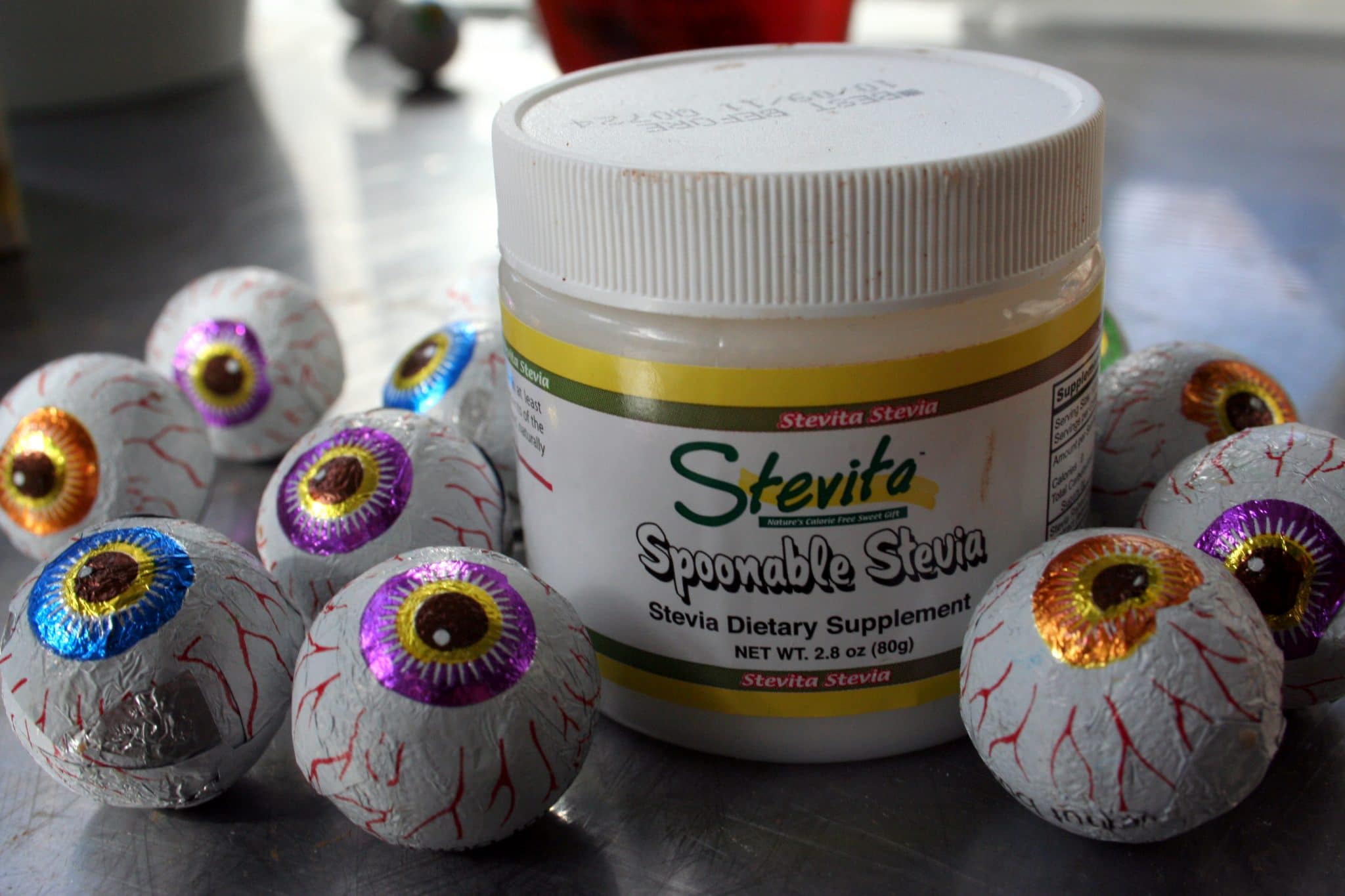
Stevia: still scary for the FDA
The sweet leaves of the stevia plant are originally from South America, and have been sweetening Yerba Mate in Paraguay for centuries. Japan has been using stevia as a sweetener since the 70’s and now it makes up 40% of all sweeteners used. So how come it’s 2009 and stevia is just showing up at my grocery store?
Stevia had quite the journey coming here: there were a handful of very dated and poorly executed studies on stevia that showed dangerous results, which scared the FDA and fueled sugar lobbyists. Two of these old studies found stevia to be a contraceptive. The data methods have been seriously questioned and the results have never been able to be reproduced (ha!) since. One study from 1985 made it seem that very high doses of stevia were mutagenic in rats. It has been shown now that the data was handled incorrectly- even water would appear mutagenic — but in 1991 the FDA decided that stevia was an unsafe food additive.
There was a lot of fuss about the FDA’s ruling because it was made on the idea that stevia hadn’t been proven safe. This contradicts the FDA policy to rule unfavorably only if a food has been proven unsafe. The ruling also conflicted with trade laws, and in 1995 the decision was reversed and stevia was allowed as a “dietary supplement” but not a “food additive.”
What does this distinction mean? It says that stevia is safe to include into a food because of its health benefits, but cannot officially be listed as a “sweetener.” Silly, right?
In 2006 the World Health Organization declared that stevia is safe. Just last year in 2008 the FDA finally decided that Rebiana, one extracted part of stevia, is generally regarded as safe. For some reason, they haven’t ok’d the entire leaf yet. Rebiana is the main ingredient in Truvia, owned by Coca-Cola, and PureVia, owned by Pepsi. My impression is that when the two big sweetener-guzzling companies got interested in stevia, their influence overpowered the aspartame and sugar lobbyists’ impact on the FDA.
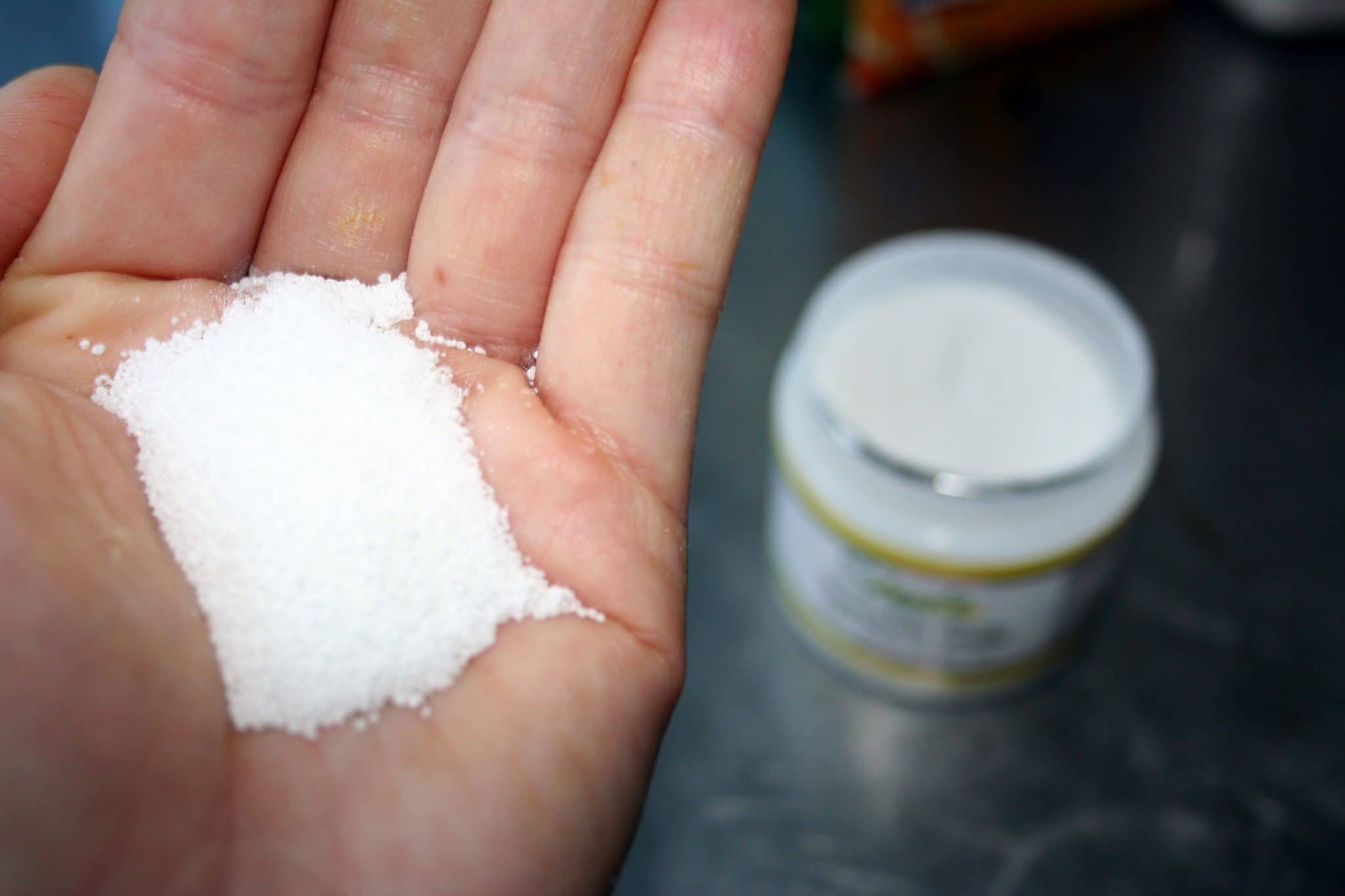
As for baking, stevia is heat stable so it won’t break down like synthetic sweeteners under high heat, and it also can handle being frozen. Because of this, it doesn’t caramelize so it is unsuitable for, well, making caramel, and also things like meringue where you would need the sugar to brown. Stevia can’t ferment either- sometimes in bread recipes you’ll see sugar being used to feed the yeast. With stevia the bread will not rise as much
Stevia as a substitute
When substituting with stevia, it’s important to compensate not just for sweetness but also for bulk. You only need to use about 1/2 a teaspoon of stevia extract for 1 cup of sugar, so you need to make up for that loss. But remember that sugar melts in the oven, so for every cup of sugar you take out, you only need 1/3 to 1/2 a cup of filler. Refer back to my post on healthier baking to find some great replacements; pumpkin, mashed bananas and applesauce all work well.
Stevia extracts aren’t standardized yet, so the strength of different brands will differ. Start with a very small amount like an 1/8 teaspoon and taste as you go. Stevia can very quickly have a bitter aftertaste. Try adding a tablespoon of maple syrup to “warm up” the taste.
Vegan Orange-Currant Brunch Cake
I modified this recipe from one posted on several different stevia websites, including steviashop.com. It’s a small batch, so you may want to double it for a taller presentation.
Ingredients:
- 2 cups whole wheat flour
- 4 tsp baking powder
- 1/4 tsp salt
- 1/2 tsp stevia
- 1 tbs egg replacer
- 1 cup orange juice
- 3 tbs walnut oil
- zest of 1 orange
- 1/2 cup dried currants
Preheat the oven to 350 degrees. Mix together the flour, baking powder, salt, and stevia, then set aside. Mix together the egg replacer with 1/4 cup warm water and stir until thick. Add juice and oil. Stir the wet ingredients into the dry. Fold in zest and currants. Spread into a greased and floured tubed pan. Bake for about 25 minutes, turning around halfway through. A knife should come out clean when it’s finished. Let cool for 20 minutes before unmolding.
I was nervous about the simplicity of this recipe, but the results were delicious! It is not too sweet at all- it reminded me of a good muffin. The currants add nice bursts of flavor too. I think the success here relied on using the stevia to play up the sweetness of the orange juice, instead of using the stevia as the main event.
Hope you learned something new about stevia and enjoy this yummy vegan cake! If you have a good dessert recipe that uses stevia, I’d be pleased as punch if you sent it my way.
Have a sweet and safe Halloween!
xoxo Christine
Leave a Reply
Christine, thanks so much for this. i wish more people would get into stevia, at least as a substitute for aspartame-based sweeteners. i feel it leaves a much cleaner taste than Splenda, and doesn’t cause the headaches i get from aspartame.
1/2 tsp of stevia for 1 cup of sugar! Whoa- this stuff is sweet! I like that it’s not synthetic- I like the agave you introduced me too- but this sounds much better having no calories!
great post! I love stevia and just did a post about it as well! On monday i’m doing a giveaway for some stevia in the raw!
Thanks for all the info! I love stevia and use it all the time; I even have a stevia plant in my dorm. I think it’s truly an undiscovered plant
Fabulous post! I’m def going to put a link to it in my post tonight. I had posted about stevia a little while ago and some of the “dangers”. Have you tried the NuNaturals baking mix? I like their other Stevia products but this mix gave my husband a nasty tummy ache.
.-= Erica´s last blog ..Sweet =-.
Great information on Stevia! You explained its history and controversies very well. What kind of recipes do you think Stevia works best in (cookies, cakes, candy, etc)?
.-= Megan (The Runner’s Kitchen)´s last blog ..Surviving the Treadmill =-.
thank you for all the info – it was super helpful, esp the baking parts!
.-= Holly´s last blog ..Just Call Me Ms. Universe =-.
There is good information here. I use Sweetleaf Sweetener stevia–the first brand. It’s founder and CEO was the first person to bring stevia to the U.S. back in 1982.
Fyi, they doesn’t have an aftertaste because it is the only brand that use only pure water during the entire extraction process, so the taste of the leaf remains. Other brands use chemicals, solvents, and alcohols during the extraction process, which can result in that weird aftertaste. Some ar now adding masking agents to cover up the taste.
-
Hey Yoda,
If Sweetleaf brand doesn’t have an aftertaste then it is officially on my list to try! That’s interesting about the extraction process, I hadn’t considered how they actually got the sweet out of the leaf!
Thanks, Christine, for all the info. I have tried other substitutes in my cooking and backing and not had much luck. I think this holiday season, if I can find stevia locally, I will use it in my fudge as opposed to so much sugar.
.-= Nicki´s last blog ..Halloween Memories =-.
Stevia has been my friend for several years now. I prefer Stevia to sweeten my herbal tea. For baking, I prefer Xylitol. I’ve found it to be an enjoyable baking sweetener. Anytime a recipe calls for a certain amount of sugar (for example, one cup) I just use that amount of Xylitol in its place. Same ratio. No confusion. Very awesome. I also love using Xylitol in some of my non-baked desserts, just because it seems it makes the dessert taste better in the end.
But I don’t bake a lot anymore, so I use Stevia more than any other sweetener.
Thanks for the fun post!
*smiles*
Michele
.-= Michele | aka Raw Juice Girl´s last blog ..Klamath Lake Blue-Green Algae (E3 Live) Review =-.
-
Hey Michele,
I’m not familiar with Xylitol. Is it synthetic? Also, is it naturally the same ratio as sugar, or is there a filler included? Sounds interesting!-
Hi there!
Here’s some info on Xylitol:
Xylitol is right here, inside, already. Our bodies produce up to 15 grams of xylitol from other food sources using established energy pathways. Xylitol is not a strange or artificial substance, but a normal part of everyday metabolism.
Xylitol is widely distributed throughout nature in small amounts. Some of the best sources are fruits, berries, mushrooms lettuce, hardwoods, and corn cobs. One cup of raspberries contains less than one gram of xylitol. — https://www.xylitol.org/
Hope that helps! It’s worth a try anyway, if you get a chance to sample some. 🙂
.-= Michele | aka Raw Juice Girl´s last blog ..Klamath Lake Blue-Green Algae (E3 Live) Review =-.
-
Thanks for the great info. on stevia. I love currants and that cake looks great!
-
Um…I think xylitol is a sugar alcohol…whatever…anyway, there is a conversion chart showing the amount of stevia that can be used for a given amount of sugar in baking, as well as some yummy-looking recipes at http://www.sweetleaf.com in case anyone might be interested.
Rebiana is actually not the main ingredient in Truvia or PureVia. Truvia 99.1% erythritol. It only has 9/10 of 1% Rebiana and masking agent, which BTW is not an ingredient in the stevia plant nor found in nature. it’s different than reb A. Rebiana is produced by the action of chemicals and stringent alcohols on various stevia glycosides, including ethanol and methanol. Gycosides are what’s in the leaf that makes it sweet. PureVia is only 99.2% erythritol, isomaltulose, and cellulose powder (and maybe another ingredient). It only is 8/10 of 1% a chemically derived extract of stevia . So, anyway, my point is that neither product is actually stevia based. I know this because I work for Wisdom natural Brands, the makers of SweetLeaf Stevia.
I’ve recently started using Stevia and I think it makes a great substitute for sugar, it’s certainly better for you than aspartame!
‘I feel much better about eating a natural no-calorie sweetener than a synthetic one’
This is the key thing for me as well. Aspartame is strongly suspected to have negative effects on health. Give me a natural, healthy alternative like Stevia any day.
Made this cake this morning. instead of stevia (didn’t have any) i added 1/2 cup of sugar, also added 1/2 cup of raisins and 1/2 cup of walnuts. it was delicious!!



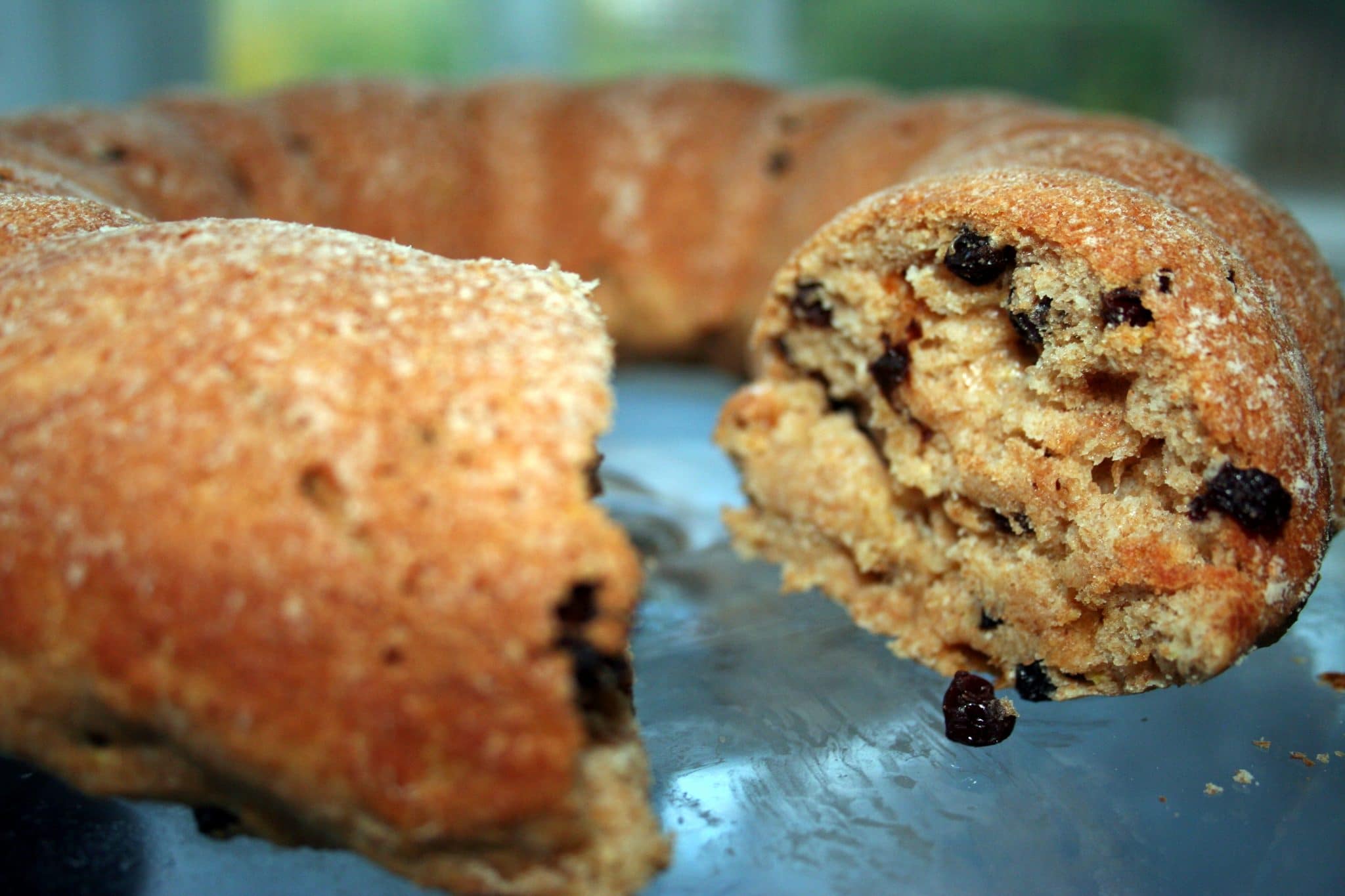
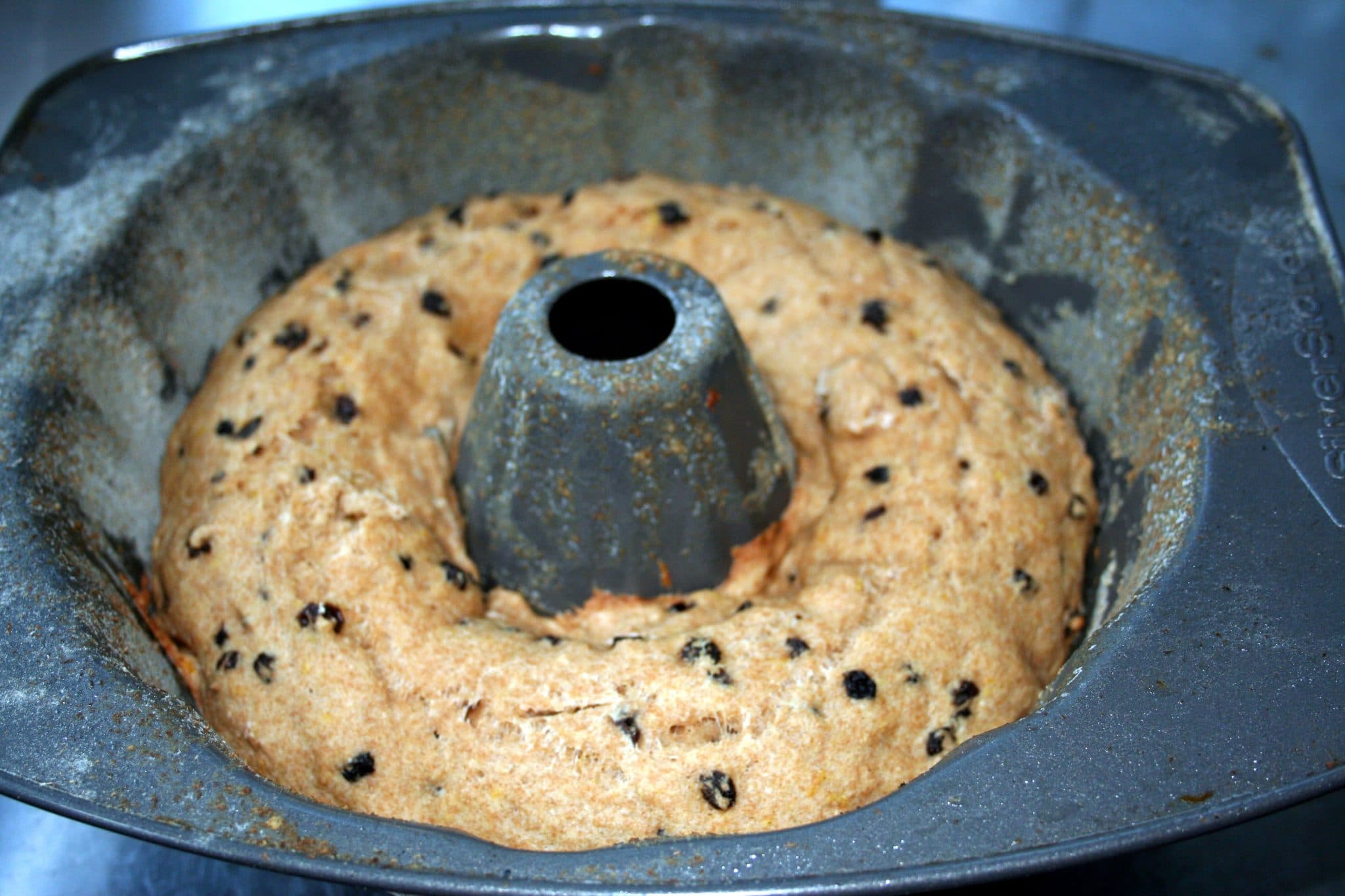

Great post!
.-= Whitney @ Lettuce Love´s last blog ..Gabby Eats College : Fluff =-.